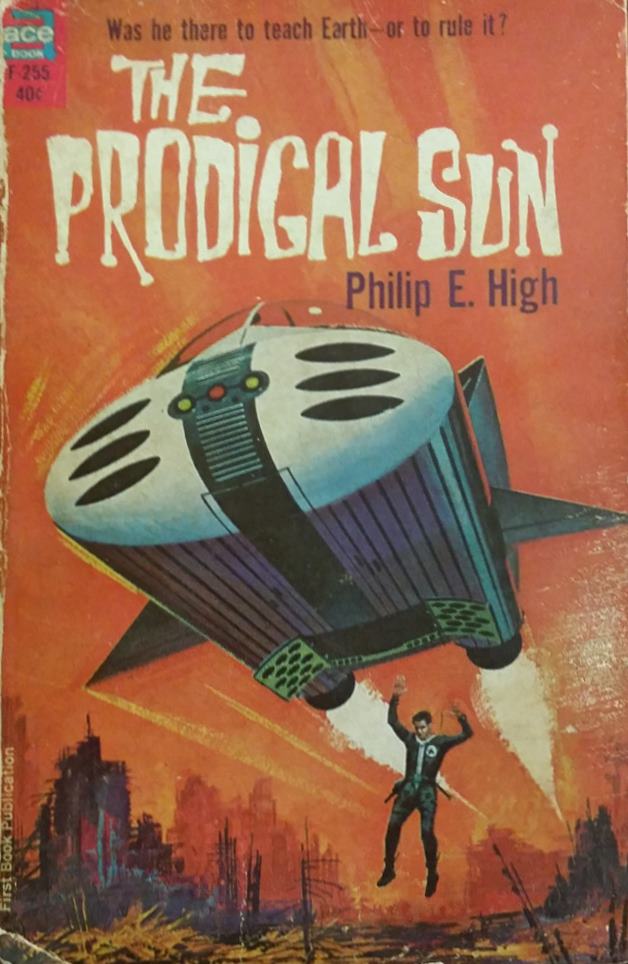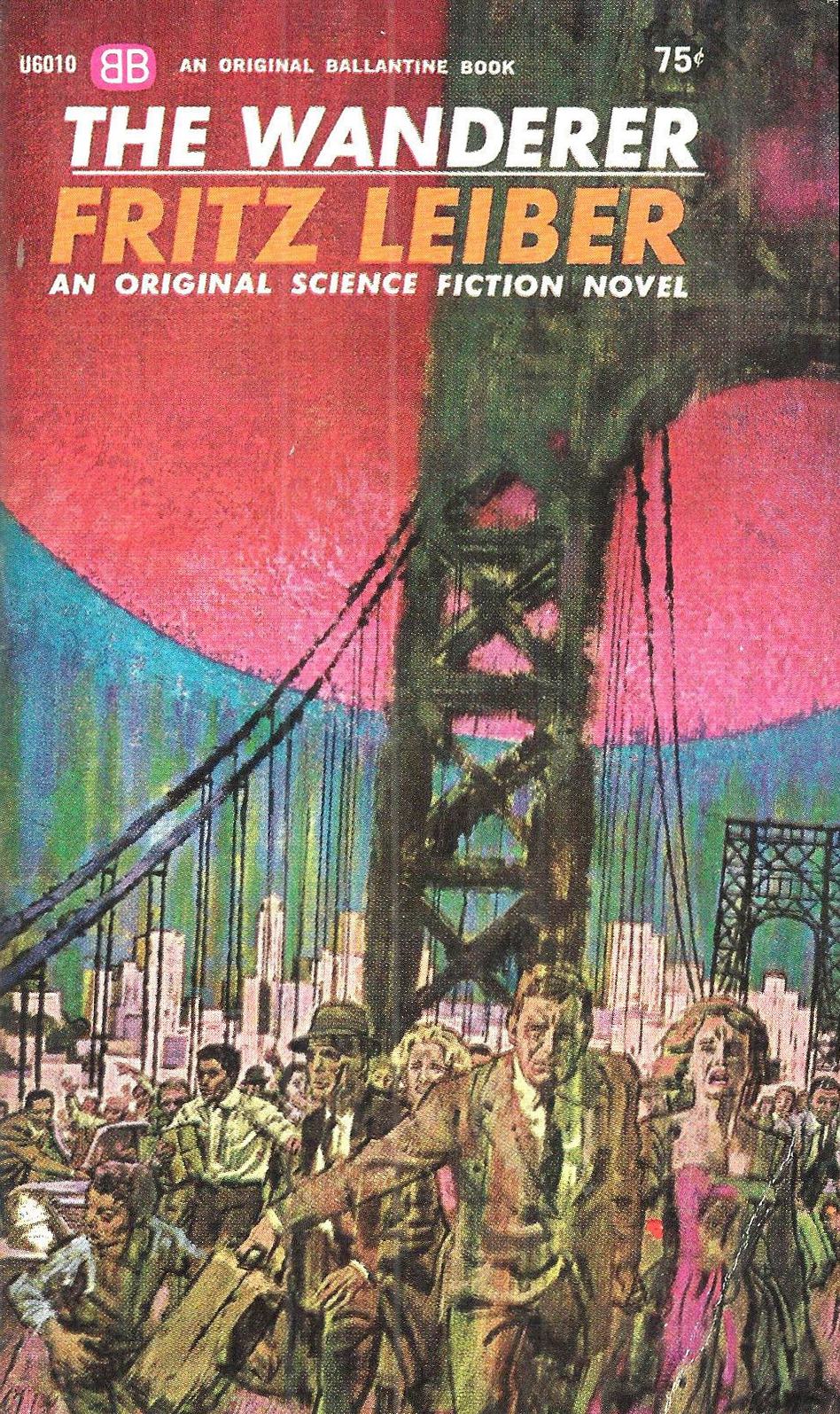
by Cora Buhlert
The season of giving is upon us. For women, perfumes like the classic scent Tosca are the most popular gifts, while men tend to find ties, socks and underwear under the tree.

Personally, I think that books are the best gifts. And so I gave myself Margaret St. Clair's latest, when I spotted it in the spinner rack at my local import bookstore, since I enjoyed last year's Sign of the Labrys a lot. Even better, this book is an Ace Double, which means I get two new tales for the price of one. Or rather, I get six, because one half is a collection of five short stories.
Message from the Eocene by Margaret St. Clair (Ace Double M-105)
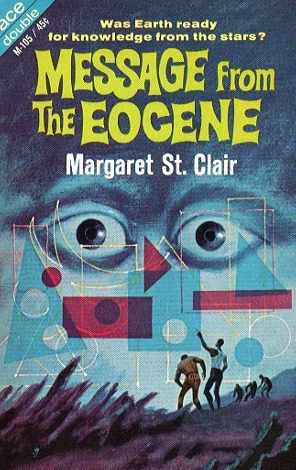
An alien in trouble
The first half is a brand-new science fiction novel called Message from the Eocene. The protagonist, a being named Tharg, is tasked with transporting a cosmic guidebook across hostile territory. The reader learns in the first paragraph that Tharg is not human, because he has a triple heartbeat. Tharg lives on Earth, but the Earth of billions of years ago (long before the Eocene, so the title is a misnomer), a world of volcanos and methane snow, devoid of oxygen. Tharg "breathes" via microorganisms inside his body that break down metallic oxides to oxygenate his blood and has extrasensory perception.
Tharg is in trouble, for a mysterious enemy is trying to thwart his mission. This enemy turns out to be the Vaeaa, a legendary alien race, who are believed to have deposited Tharg's people on Earth in the first place.
Tharg is taken is taken prisoner, but not before he manages to hide the book inside a volcano (it has a protective casing). Under interrogation, Tharg has an out-of-body experience. As a result, his consciousness remains, when his body dies during an escape attempt, to witness the extinction of both his people and the Vaeaa, though the Vaeaa manage to set up a projector on Pluto to keep out further cosmic guidebooks first.
Over billions of years, Tharg's spirit observes life arise and evolve on Earth. Tharg realises that the book might help with his condition, but he has no way to retrieve it. So Tharg decides to ask the Earth's new inhabitants for help. But how to make himself known, considering that Tharg is a bodyless spirit being and never was human in the first place?
Misadventures and miscommunications
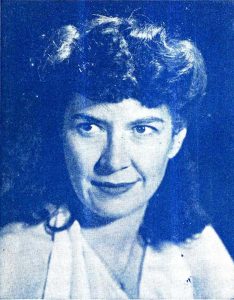
The rest of the novel chronicles Tharg's attempts to communicate. Tharg's first attempt targets the Proctors, a Quaker family in 19th century England. This goes disastrously wrong, because not only do the Proctors come to believe that their house is haunted – no, Tharg also gets trapped in the house. Taken on its own, the Proctor segment feels like a Victorian ghost story, except that the ghost is a desperate disembodied alien. The insights into the lives of 19th century Quakers are fascinating, but then Margaret St. Clair is a member of the Society of Friends.
Tharg's next attempt targets Denise, who lives with her husband Pierre in a French colony in the South Pacific. Denise has extrasensory perception, making her the ideal subject. But once again Tharg only succeeds in giving Denise nightmares and causing hauntings in the mine Pierre oversees. Worse, the superstitious miners blame Denise for the hauntings. They kidnap the couple and give Denise hallucinogenic herbs to increase her abilities. Now Denise is able to communicate with Tharg long enough to realise that he wants them to recover the book.
So Pierre uses his mining job to blast a hole into a mountain at the very spot where Denise insists the book is hidden. After some trouble with Vietnamese workers – an incident St. Clair uses to explain that oppression during colonial times has left the Vietnamese angry and frustrated, which leads to violence, a lesson that is highly relevant to the situation in Vietnam today – Denise and Pierre manage to retrieve the book. Alas, once they open the protective casing, the book bursts into flame and is destroyed.
Tharg now sets his sights on the projector the Vaeaa installed on Pluto to keep future cosmic guidebooks away from Earth. For if another book were to arrive, Tharg might finally be able to escape his condition.
Sacrifices and success
There is another time jump to 1974, when strange things happen. An experiment detects a purely theoretical particle, a sea captain sees a mermaid, Canadians dance under the Northern lights and a Tibetan monk has a vision. Tharg views these events as signs that another guidebook is on the way. But due to the projector on Pluto, it will never reach Earth.
In order to shut down the projector long enough to let the book through, Tharg has to dissolve himself in the collective consciousness of humanity, which will also mean his annihilation. So Tharg sacrifices himself and the book is picked up by an expedition to Venus. The novel ends with Tharg waking on the astral plane in a replica of his original body, just as the US-Soviet crew of the spaceship to Venus is about to open the book.
This is a strange and disjointed, but fascinating novel. Though Tharg is one of the rare truly alien aliens of science fiction, he is nonetheless a likeable protagonist and the reader sympathises with his plight. Tharg is also an unlikely messiah, sacrificing himself to assure the future of humanity.
Humanity being uplifted and our minds and bodies evolving is a common theme in our genre. However, Message from the Eocene offers a very different variation on this theme compared to what you'd find in the pages of Analog, even if psychic abilities are involved. The enlightenment offered by the book is reminiscent of both Buddhism and various occult traditions, while its arrival alludes to the so-called Age of Aquarius that astrologers believe will arrive soon.
In a genre that is still all too often peopled solely by white American men, the humans Tharg encounters are of all genders, races, nationalities and religions and all are portrayed sympathetically. For if the alien Tharg does not discriminate based on superficial criteria, then maybe neither should we. It is also notable that even before they receive the book, St. Clair's near future Earth is a more peaceful place than our world, where China has withdrawn from Tibet and the US and USSR cooperate in space.
Message from the Eocene is a story of failed communication, but also a story of evolution and enlightenment and overcoming one's limitations. Given the state of the world today, this may be just the message humanity needs.
Four and a half stars.
Three World of Futurity by Margaret St. Clair

Three Worlds and five stories
Three Worlds of Futurity, the other half of this Ace Double, is a collection of five short stories originally published between 1949 and 1962. The three worlds in question are Mars, Venus and Earth.
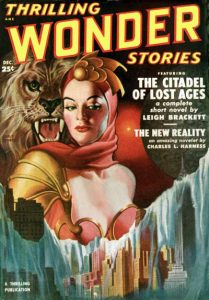 In "The Everlasting Food", Earthman Richard Dekker finds that his Venusian wife Issa has changed after lifesaving surgery. One night, Issa announces that she is immortal now, that she no longer needs to eat and that energy sustains her. Soon thereafter, she leaves, taking their young son with her. Richard takes off after her to get his son back, Issa's human foster sister Megan in tow. After many trials and tribulations, they finally find Issa – only for Richard to lose his wife and son for good. But while Richard is heartbroken, he has also fallen in love with Megan.
In "The Everlasting Food", Earthman Richard Dekker finds that his Venusian wife Issa has changed after lifesaving surgery. One night, Issa announces that she is immortal now, that she no longer needs to eat and that energy sustains her. Soon thereafter, she leaves, taking their young son with her. Richard takes off after her to get his son back, Issa's human foster sister Megan in tow. After many trials and tribulations, they finally find Issa – only for Richard to lose his wife and son for good. But while Richard is heartbroken, he has also fallen in love with Megan.
"The Everlasting Food" is a curious mix of domestic science fiction in the vein of Zenna Henderson and Mildred Clingerman and planetary adventure in the vein of Leigh Brackett, and never quite gels. I did like Megan, who is described as dark-skinned, by the way, but Issa is hard to connect to and Richard, though well meaning, falls for Megan a little too quickly. Furthermore, the villain feels like an afterthought who comes out of nowhere.
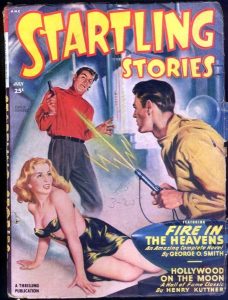 "Idris' Pig" opens on a spaceship to Mars. George Baker is the ship's resident psychologist. His cousin Bill is a courier and passenger aboard the same ship. When Bill falls ill, it's up to George to deliver the object Bill was supposed to deliver, a blue-skinned sacred pig. However, Bill can only give George very vague instructions about where to deliver the pig and so the pig is promptly stolen. And so George has to retrieve it with the help of Blixa, a young Martian woman. As a result, George gets mixed up with drug dealers and Martian cults, involved in an interplanetary incident and lands in jail. He also completely forgets about the woman he has been trying very hard not to think about and falls in love with Blixa.
"Idris' Pig" opens on a spaceship to Mars. George Baker is the ship's resident psychologist. His cousin Bill is a courier and passenger aboard the same ship. When Bill falls ill, it's up to George to deliver the object Bill was supposed to deliver, a blue-skinned sacred pig. However, Bill can only give George very vague instructions about where to deliver the pig and so the pig is promptly stolen. And so George has to retrieve it with the help of Blixa, a young Martian woman. As a result, George gets mixed up with drug dealers and Martian cults, involved in an interplanetary incident and lands in jail. He also completely forgets about the woman he has been trying very hard not to think about and falls in love with Blixa.
This is an utterly charming story, a science fiction screwball comedy reminiscent of Howard Hawks' Bringing Up Baby. A hidden gem and true delight.
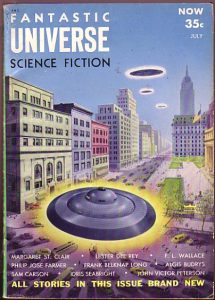 "The Rages" is set in an overmedicated Earth of the future. Harvey has a perfect life and a perfect, though sexless marriage. However, he has a problem because his monthly ration of euphoria pills has run out. And without euphoria pills, Harvey fears the oncoming of the rages, attacks of uncontrollable anger, which eventually lead to a final rage from which one never emerges. The story follows Harvey through his day as he meets several people and tries to get more pills. Gradually, it dawns upon both Harvey and the reader that the pills may be causing the very rages they are supposed to suppress. The story ends with Harvey throwing all of his and his wife's pills away.
"The Rages" is set in an overmedicated Earth of the future. Harvey has a perfect life and a perfect, though sexless marriage. However, he has a problem because his monthly ration of euphoria pills has run out. And without euphoria pills, Harvey fears the oncoming of the rages, attacks of uncontrollable anger, which eventually lead to a final rage from which one never emerges. The story follows Harvey through his day as he meets several people and tries to get more pills. Gradually, it dawns upon both Harvey and the reader that the pills may be causing the very rages they are supposed to suppress. The story ends with Harvey throwing all of his and his wife's pills away.
This is a dystopian tale in the vein of Brave New World and Fahrenheit 541. The future world St. Clair has built is fascinating, if horrifying, and I would have liked to see more of it. However, Harvey is a thoroughly unlikeable character, who almost rapes two women in the course of a single novelette. Maybe Harvey could have rediscovered his messy humanity without resorting to sexual violence.
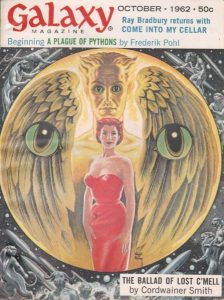 "Roberta" is the shortest and most recent story, first published in Galaxy in October 1962, reviewed by our editor Gideon Marcus here. Roberta is a confused young woman with the unfortunate tendency to kill men. Robert is the phantom who won't leave her alone. Eventually, it is revealed that Roberta had a sex change operation and that "Robert" represents her former self, as do the men she kills.
"Roberta" is the shortest and most recent story, first published in Galaxy in October 1962, reviewed by our editor Gideon Marcus here. Roberta is a confused young woman with the unfortunate tendency to kill men. Robert is the phantom who won't leave her alone. Eventually, it is revealed that Roberta had a sex change operation and that "Robert" represents her former self, as do the men she kills.
Transsexualism is a subject that science fiction almost never addresses, even though our genre is ideal for it. After all, there are transsexuals living in our world right now and science offers possibilities to make it much easier for them to live the lives they want to. So I applaud Margaret St. Clair for tackling what is sadly still a taboo topic (and for having her heroine utter another taboo word, "abortion"), though I am troubled that science fiction's only transsexual heroine (so far) is also a multiple murderer.
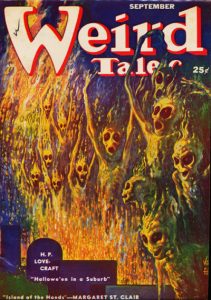 In "The Island of the Hands", Dirk dreams about his wife Joan who died in a plane crash at sea. He hires a plane to check out the coordinates from his dream and crashes on an invisible island. Dirk finds Joan's plane and a dead body and also meets Miranda, a young woman who suspiciously resembles Joan. He is on the Island of the Hands, Miranda informs them, where everybody can shape their heart's desire from mythical mist. Dirk tries to shape Joan, but fails. He spends the night with Miranda, who confesses that Joan is still alive, but trapped in the mist. Dirk goes after her and rescues Joan, only to learn that there is a very good reason why Miranda looks so much like an idealised version of Joan.
In "The Island of the Hands", Dirk dreams about his wife Joan who died in a plane crash at sea. He hires a plane to check out the coordinates from his dream and crashes on an invisible island. Dirk finds Joan's plane and a dead body and also meets Miranda, a young woman who suspiciously resembles Joan. He is on the Island of the Hands, Miranda informs them, where everybody can shape their heart's desire from mythical mist. Dirk tries to shape Joan, but fails. He spends the night with Miranda, who confesses that Joan is still alive, but trapped in the mist. Dirk goes after her and rescues Joan, only to learn that there is a very good reason why Miranda looks so much like an idealised version of Joan.
It's no surprise that this story was first published in Weird Tales, since it has the otherworldly quality typical for that magazine. "The Island of the Hands" reminded me of the 1948 Leigh Brackett story "The Moon That Vanished", where another heartbroken widower finds himself faced with a magical mist that shapes one's heart's desire.
All in all, this is an excellent collection. Not every story is perfect (though "Idris' Pig" pretty much is), but they are all fascinating and make me want to read more of Margaret St. Clair's work.
Four stars for the collection.
[But wait! There's more!]

by Gideon Marcus
False Finishes
After such a remarkable pair of books, I hate to sully this edition with less than stellar reviews. But the year is almost up, and there are a lot of books to get through. So, here is a trio of novels that start promisingly and then fizzle out.
The Greks Bring Gifts, by Murray Leinster

If you can get past the punny title, Gifts grabs your interest from the first. In the near future, the humanoid Greks land in a miles-long spaceship. They were just sailing by, training a class of Aladarian engineers, and thought they'd pop in to give humanity a myriad of technological gifts. The aliens are welcomed with riotous joy — after all, soon no one will have to work more than one day a week, and all the comforts of the world will be evenly distributed.
But one fellow, Jim Hackett, is suspicious. Despite being a brilliant young physicist, he was rejected as a candidate to learn Grek science after failing to comprehend it. Was he just not bright enough? Or were the Greks feeding us gobbledegook to keep us ignorant? And then, why did the Greks abruptly leave after six months, just as desire for the fruits of their wondrous technology was peaking, but the ability to sate said desire was lacking? Finally, after the Grek ship had left, why did an archaeologist party find the bones of Aldorians in the ship's waste ejecta? And worse yet, those of humans?
So Hackett and his fiancee, the capable Dr. Lucy Thale, work together to reverse engineer the Grek technology so that, when they return to a world whose populace is fairly begging for them to come back, Earth can stand against them and provide for its own.
What begins as a fascinating mystery quickly proves overlong. Leinster is much better with short stories, before his Hemmingway-esque style can wear thin. The endless repetition of certain phrases and epithets brings to mind the devices Homer used to make The Illiad easier to recite from memory, but they don't do a reader any favors. As for characterization, Leinster might as well have named the characters A, B, and C for all the color they possess. A shorter story would have made that issue stand out less.
Anyway, it's an interesting storyline; it would make a good movie, but as is, it's a mediocre novel. Three stars.
Arsenal of Miracles (ACE Double F-299), by Gardner F. Fox

From the notable pen of comics writer and, now, SF author Gardner Fox, we have a brand new ACE novel. And this one isn't a short 120-pager. No, this time we've got 157 pages devoted to the adventures of Bran Magannon, formerly an Admiral of a Terran space fleet, vanquisher of the invading Lyanir, and now a discredited exile, wandering across the known and unknown galaxy. Arsenal starts off beautifully, like a space age Fritz Leiber fantasy. A nearly penniless Bran arrives on the desolate world of Makkador to make traveling funds through gambling. There, he throws dice against, and loses to, the lovely Peganna, queen of the Lyanir. And then we learn Bran's tragic past: how he divined how to defeat the seemingly invincible Lyanir ships; how he negotiated for the Lyanir to be given a sanctuary world within the Terran Cluster of stars. How Bran was betrayed by an ambitious subordinate, who sabotaged the talks, discredited Bran, and condemned the Lyanir to inhabit a radioactive wasteland of a planet.
But now Bran has an ace up his sleeve — he has discovered the ancient portal network of the Crenn Lir, a precursor race that once inhabited countless worlds. If Bran and Peganna can find the Crenn Lir arsenal before they are caught by Terran and Lyranir agents, they might be able to negotiate with the Terrans as equals and secure a sanctuary for the weary aliens.
I tore through the first third of this book, but things slowed halfway through. I grew irritated that there was exactly one female character in the book, though I did appreciate the natural and loving relationship Peganna and Bran shared. What promises to be a galaxy-trotting adventure with big scope and ideas ends up a rather conventional story on a very few settings. Things pick up a bit in the final third, but I found myself comparing the endeavor unfavorably to Terry Carr's Warlord of Kor, a somewhat similarly themed Ace novel from last year.
Three and a half stars.
Endless Shadow (ACE Double F-299), by John Brunner

With the Fox taking up so much space in the Ace Double, the second title must needs be short. Luckily, John Brunner's Bridge to Azazel, which came out in February's issue of Amazing, fit nicely. Both lengthwise and thematically: Endless Shadow also features teleportation across the stars, in this case involving a Terra reestablishing contact with farflung space colonies.
The general consensus among the Journey's various readers is that this was a premise with a lot of potential, but that Brunner failed to deliver satisfactorily. Ratings ranged from two to three and a half stars. Call it an even three.
Books to Come
These days, there are almost more books coming out than a fellow (or even a band of fellows) can read! So, to make sure we cover all of the important books of 1964, there will be a second Galactoscope in a couple of days. May they be more akin to the stellar St. Clairs than the disappointing Leinster/Fox/Brunner.
[Holiday season is upon us, and Rediscovery: Science Fiction by Women (1958-1963), containing some of the best science fiction of the Silver Age, makes a great gift! Think of it as a gift to friends…and the Journey!

![[December 11, 1964] December Galactoscope](https://galacticjourney.org/wp-content/uploads/2019/12/message_from_the_eocene-296x372.jpg)

![[October 26, 1964] A revolting set of circumstances (October 1964 Galactoscope #2)](https://galacticjourney.org/wp-content/uploads/2019/10/641026covera-672x372.jpg)





![[October 18, 1964] Out in Space and Down to Earth (October's Galactoscope #1)](https://galacticjourney.org/wp-content/uploads/2019/10/641018covers-672x372.jpg)

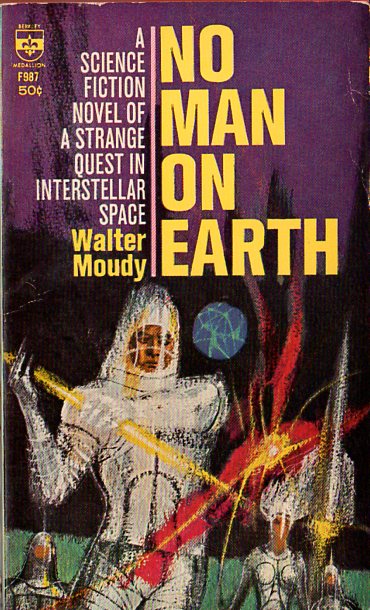


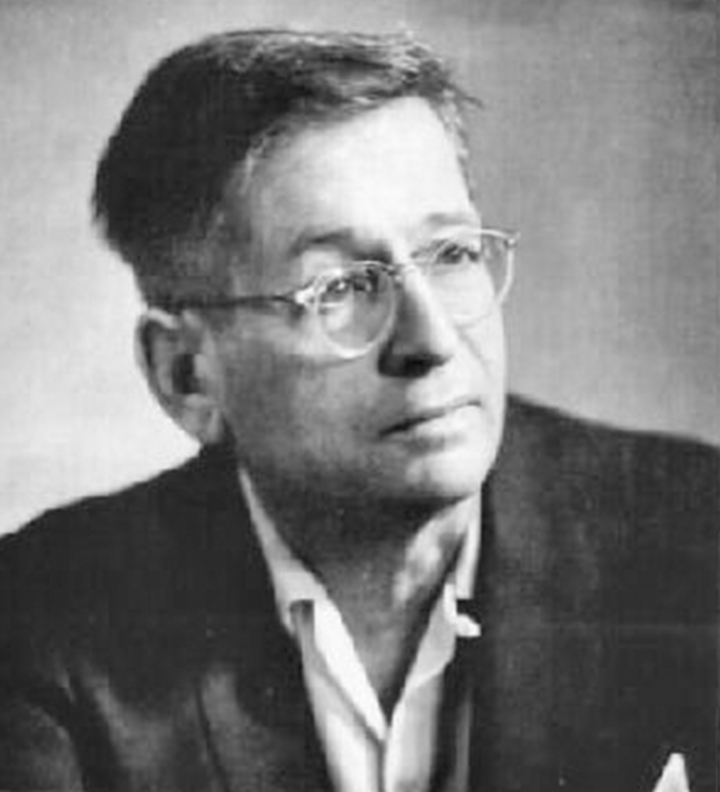
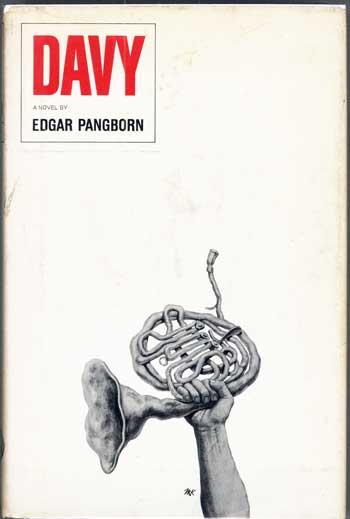

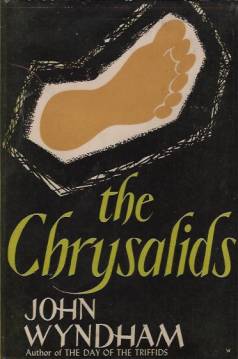
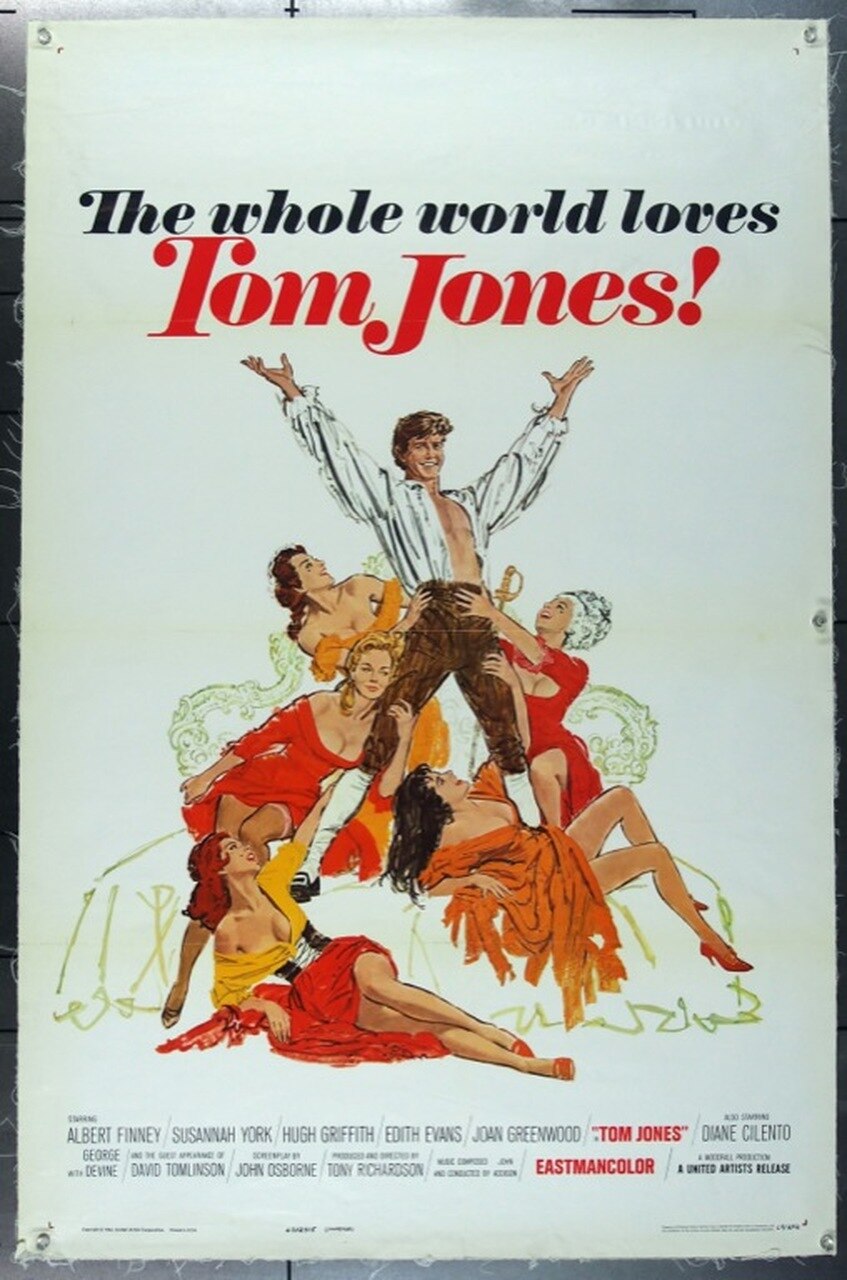

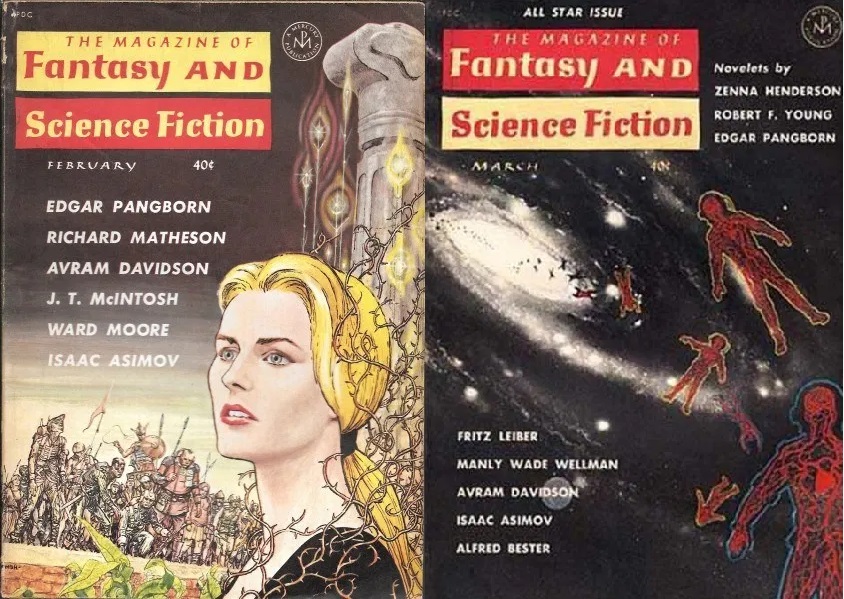
![[September 20, 1964] Apocalypses and other trivia (Galactoscope)](https://galacticjourney.org/wp-content/uploads/2019/09/penultimate-cover-672x352.jpg)







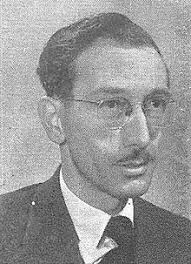
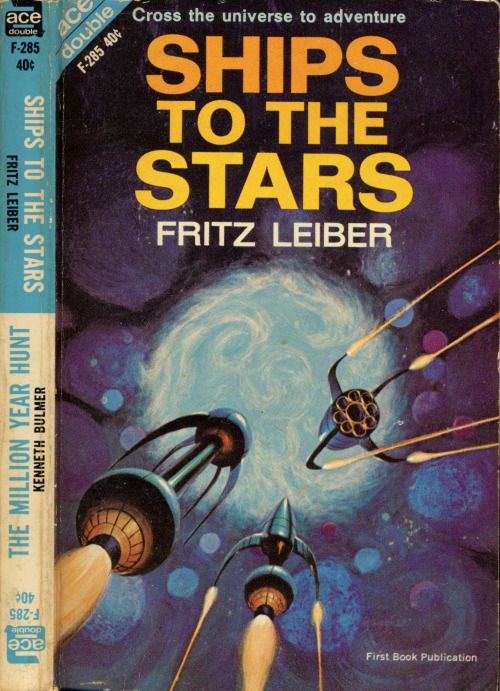

![[August 15, 1964] What are you thinking? (<i>The Whole Man</i> aka <i>Telepathist</i> by John Brunner; <i>The Universe Against Her</i>, by James H. Schmitz)](https://galacticjourney.org/wp-content/uploads/2019/08/640815covers-672x372.jpg)













![[July 18, 1964] Dog Day Crop (July's <i>Galactoscope</i>)](https://galacticjourney.org/wp-content/uploads/2019/07/640718covers-672x372.jpg)



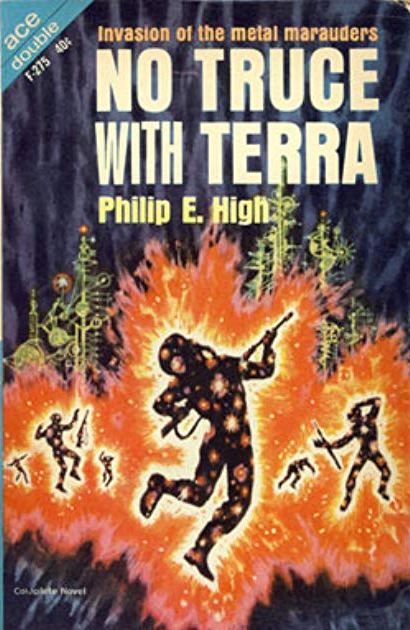
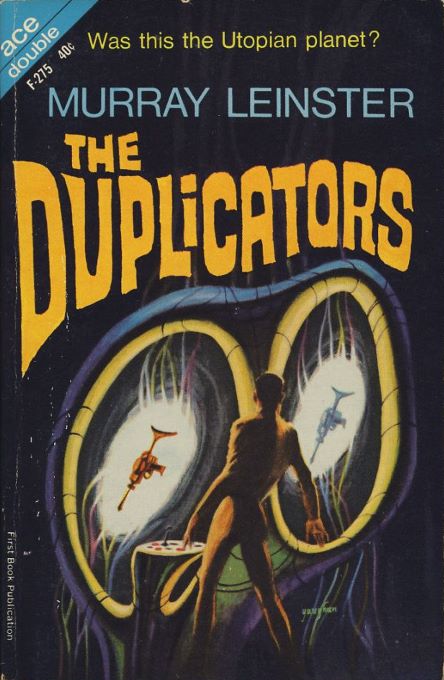
![[June 18, 1964] Bad Comic Book Style and Good Comic Book Style (Galactoscope)](https://galacticjourney.org/wp-content/uploads/2019/06/158064-672x372.jpg)

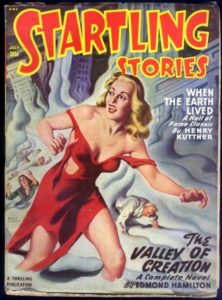 The Valley of Creation is an action-packed science fantasy adventure that feels like a throwback to the pulp era, probably because it is. For The Valley of Creation is an expanded version of a story first published in the July 1948 issue of Startling Stories. This has caused some anachronisms, e.g. at one point Eric remarks that he has been in Asia for ten years, which would set the story in 1960. However, the Chinese Civil War and the annexation of Tibet and the East Turkestan Republic, which are the reason why Eric and his comrades are in the Himalayas in the first place, happened in 1949 and 1950, i.e. shortly after the story was originally published.
The Valley of Creation is an action-packed science fantasy adventure that feels like a throwback to the pulp era, probably because it is. For The Valley of Creation is an expanded version of a story first published in the July 1948 issue of Startling Stories. This has caused some anachronisms, e.g. at one point Eric remarks that he has been in Asia for ten years, which would set the story in 1960. However, the Chinese Civil War and the annexation of Tibet and the East Turkestan Republic, which are the reason why Eric and his comrades are in the Himalayas in the first place, happened in 1949 and 1950, i.e. shortly after the story was originally published.
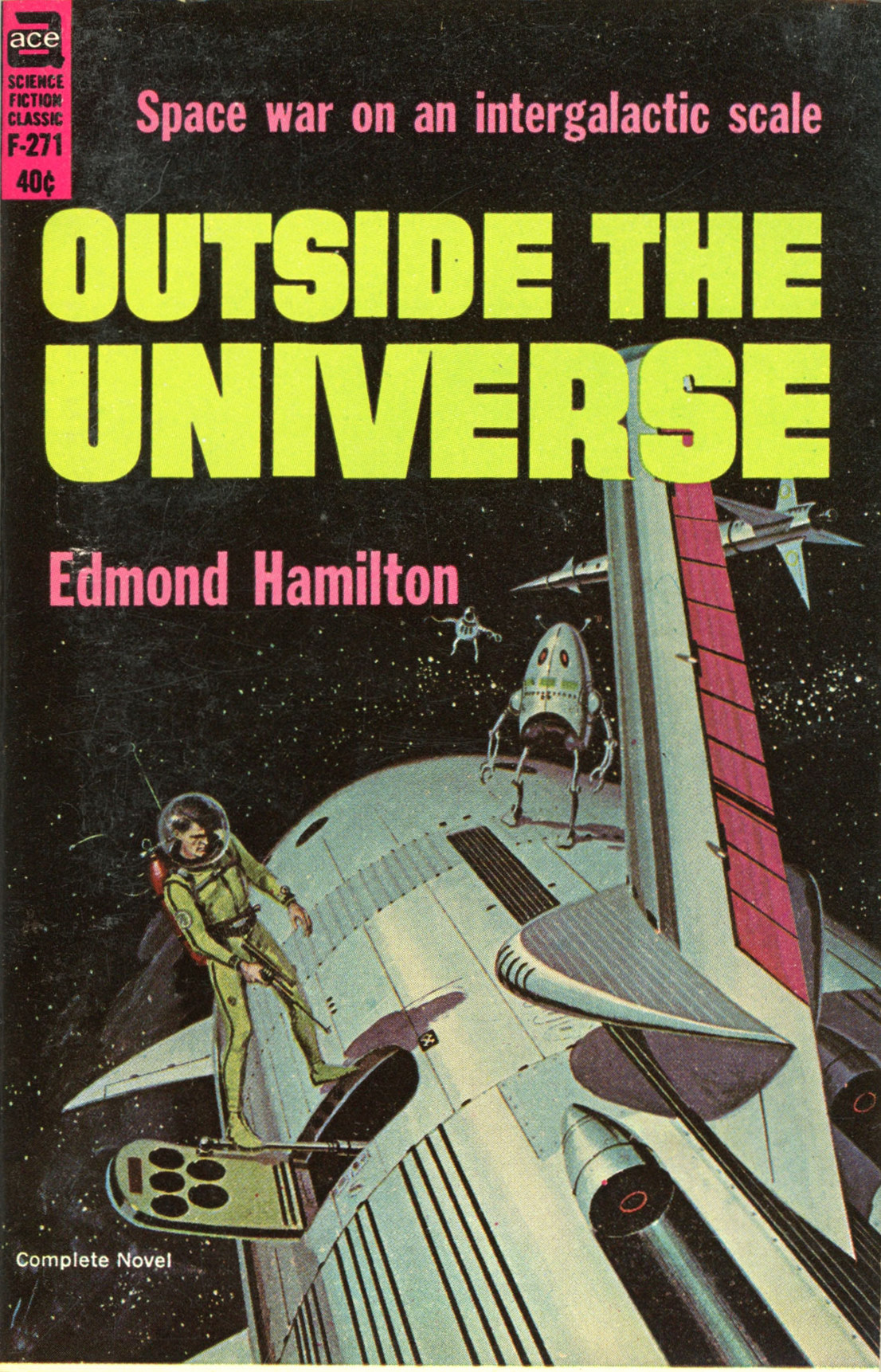
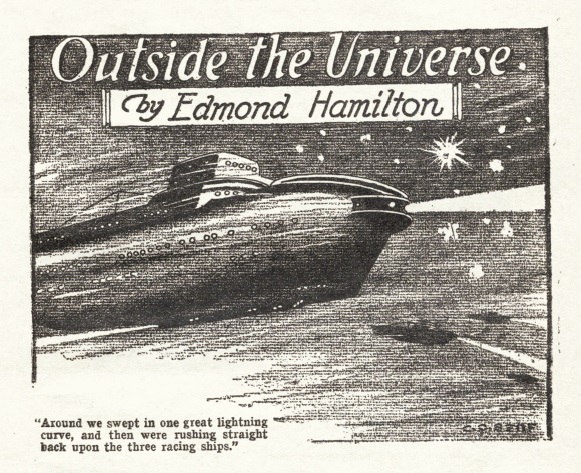
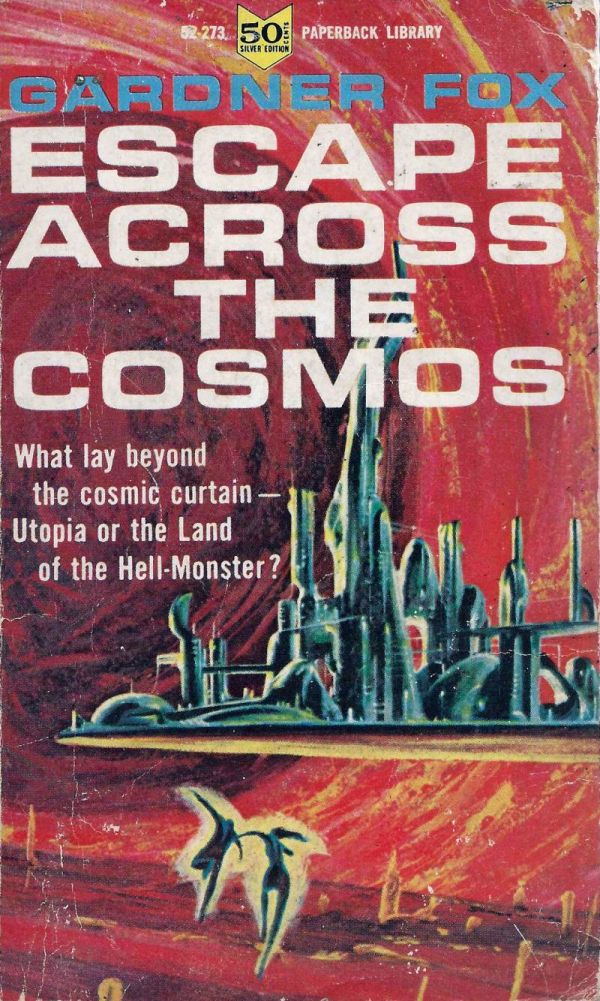
![[May 26, 1964] Stag Party (Silverberg's <i>Regan's Planet</i> and <i>Time of the Great Freeze</i>)](https://galacticjourney.org/wp-content/uploads/2019/05/640526books-672x372.jpg)



![[March 29, 1964] Five by Five (March Galactoscope)](https://galacticjourney.org/wp-content/uploads/2019/03/640329marooned-1-417x372.jpg)
